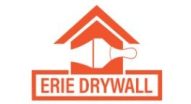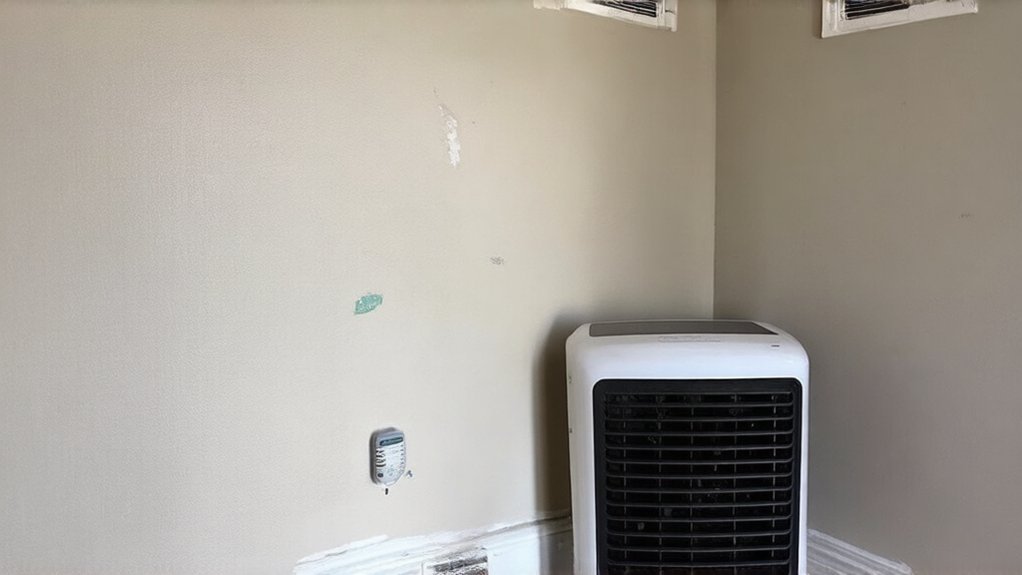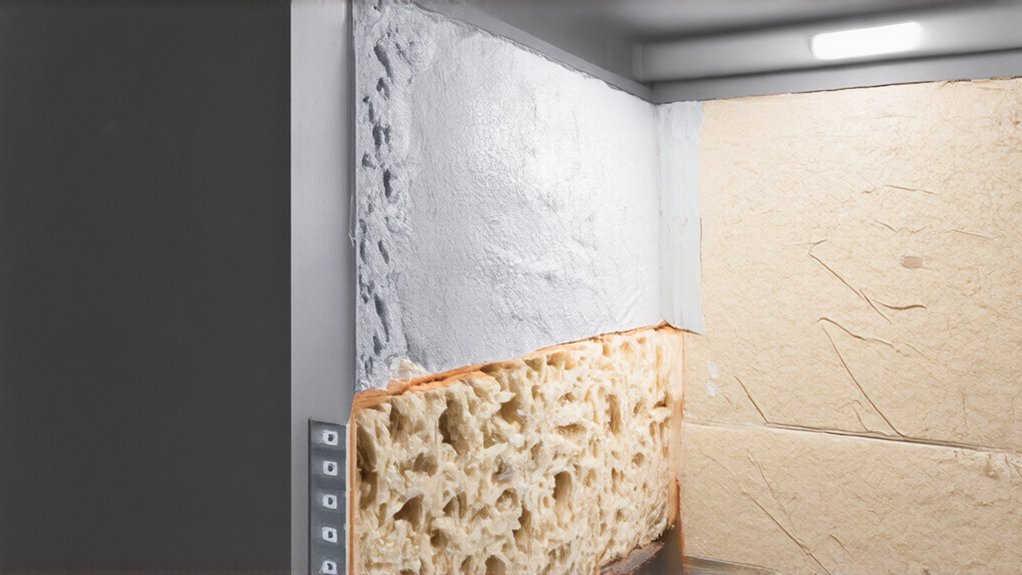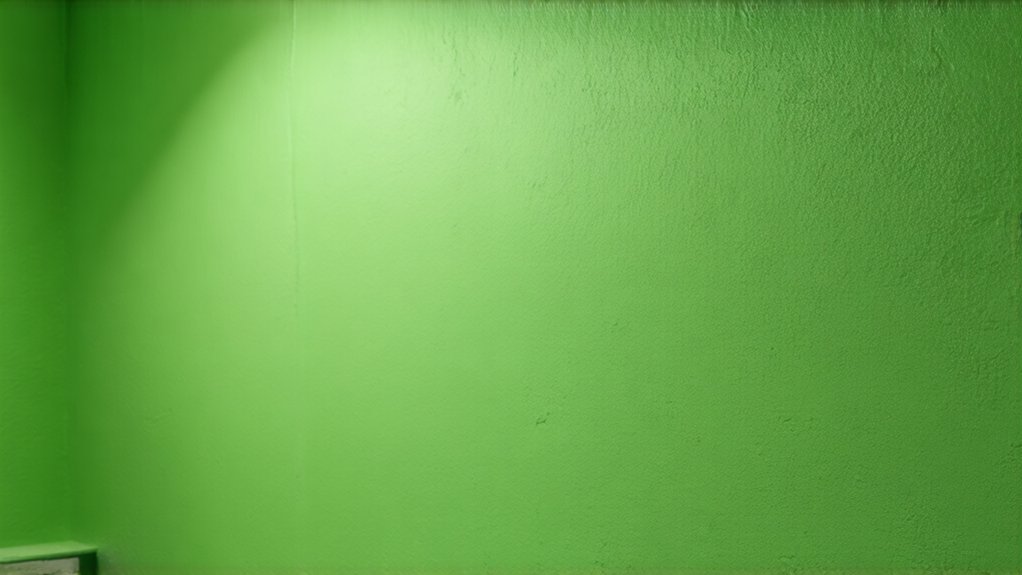To prevent mold growth on drywall in humid climates, you'll need a strategic approach. Maintain indoor humidity levels below 50% using dehumidifiers and proper ventilation. Install exhaust fans in moisture-prone areas like bathrooms and kitchens. Regularly inspect walls for signs of dampness or discoloration, and address any water leaks immediately. Use moisture-resistant primers and paints, and guarantee good air circulation throughout your home. Keep exploring for more thorough prevention strategies.
Understanding Humidity and Mold Dynamics
When humidity levels rise, mold can rapidly become a homeowner's worst nightmare. Understanding the relationship between ambient moisture monitoring and condensation prevention is vital for safeguarding your drywall.
High humidity creates ideal conditions for mold spores to thrive, especially in enclosed spaces with poor ventilation. You'll want to pay close attention to areas prone to moisture accumulation, like bathrooms, kitchens, and basements. Professional drywall contractors in Erie, PA recommend regular inspections to detect early signs of moisture damage and potential mold growth.
Essential Ventilation Strategies for Drywall Protection
Proper ventilation stands as your primary shield against mold growth on drywall in humid environments. By implementing strategic airflow techniques, you'll create a sturdy defense mechanism for your home's vulnerable walls. Drywall installation experts recommend utilizing professional techniques to maximize moisture protection.
Key strategies include:
- Installing exhaust fans in high-moisture areas like bathrooms and kitchens
- Maintaining consistent air circulation through strategic window and door positioning
- Utilizing dehumidifier installation to control ambient moisture levels
Enhancing wall insulation quality further reinforces your mold prevention efforts. You'll not only protect your drywall but also create a healthier living space that feels comfortable and secure against potential moisture-related damages.
Effective Moisture Control Techniques
Three critical moisture control techniques can make a world of difference in protecting your drywall from mold growth. First, install moisture barriers in areas prone to humidity, creating a defensive shield against potential water intrusion. Pay special attention to bathrooms, kitchens, and basement walls where moisture accumulates most frequently.
Strategically manage air circulation patterns by using fans and dehumidifiers to reduce ambient moisture levels. These devices help maintain ideal humidity, preventing condensation that can lead to mold development. Your proactive approach will safeguard your home's structural integrity and create a healthier living environment.
Routine Inspection and Early Detection Methods
Because mold can silently spread and compromise your home's health, regular drywall inspections become a critical defense mechanism against potential damage. Protecting your living space requires vigilant monitoring and proactive strategies.
Key early detection methods include:
- Executing monthly visual inspections of walls, ceilings, and corners
- Using professional sampling protocols to identify hidden mold spores
- Checking humidity levels and potential moisture accumulation zones
Understanding these techniques helps you catch potential mold growth before it becomes a significant problem. By staying attentive and implementing routine checks, you'll maintain a healthier home environment and prevent costly structural repairs.
Best Practices for Drywall Maintenance
Keeping your drywall in top shape boils down to a strategic approach that tackles moisture and potential damage head-on. You'll want to focus on proper drywall installation and expert finishing techniques to create a resilient barrier against humidity.
Pay close attention to seams, edges, and corners during installation, ensuring tight, smooth connections that minimize moisture penetration. Use high-quality primer and paint designed for humid environments, which can provide an additional protective layer.
Regular maintenance, including prompt repairs of any cracks or damage, will help prevent potential mold growth and preserve your walls' integrity.
Professional Remediation and Long-Term Prevention
When mold has already invaded your drywall, professional remediation becomes essential for safeguarding your home's structural soundness and your family's well-being. Affordable mold testing helps you understand the extent of the problem, while professional mold testing provides detailed insights into potential health risks.
Key strategies for effective mold management include:
- Hiring certified mold remediation specialists
- Implementing thorough moisture control techniques
- Carrying out regular home inspections and preventative maintenance
Frequently Asked Questions
Can Using a Dehumidifier Completely Prevent Mold Growth on Drywall?
While a dehumidifier helps, it can't completely prevent mold. You'll need proper ventilation needs and humidity monitoring systems to truly protect your drywall. Stay proactive, and you'll keep your space healthier and mold-free.
How Quickly Does Mold Start Developing After Water Damage Occurs?
You'll find mold can start growing within 24-48 hours after water damage, depending on moisture levels and time of exposure. The faster you act to dry and clean the affected area, the better chance you have of preventing widespread mold growth.
Are Certain Areas of My Home More Prone to Mold?
You'll find bathrooms, kitchens, basements, and areas with poor ventilation requirements are most vulnerable. Implement moisture control strategies like dehumidifiers and proper airflow to protect these high-risk spaces from potential mold growth and keep your home healthy.
Does Painting Drywall Help Prevent or Stop Potential Mold Growth?
Painting can help prevent mold, but you'll need the right paint composition and proper application technique. Choose mold-resistant paints with antimicrobial properties, and guarantee you're applying a smooth, even coat that seals potential moisture entry points.
Can Household Cleaning Products Effectively Remove Small Mold Patches?
You'll find bleach-based cleaners and white vinegar solutions can effectively tackle small mold patches. While DIY methods work for minor issues, larger infestations require professional intervention to guarantee your home stays clean and healthy.



